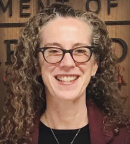A recent study underscored the need for integrating cost-of-care conversations in cancer treatment. Results of the population-based analysis, presented at the 2023 ASCO Quality Care Symposium,1 showed that only about 25% of patients with newly diagnosed advanced non–small cell lung cancer (NSCLC) and melanoma had a documented cost-of-care discussion in their medical records. Findings also showed that patients with private health insurance coverage were less likely to have documented cost discussions compared with their publicly insured counterparts (odds ratio = 0.54; 95% confidence interval = 0.37–0.80).
Authors of the study emphasized that these conversations may not only aid patients in financial planning but also may help clinicians to mitigate potential financial hardship by referring patients to relevant resources and services. “Our findings once again highlight the pressing need for clear and documented discussions about the cost implications of cancer care,” said lead study author Robin Yabroff, PhD, MBA, Scientific Vice President, Health Services Research, American Cancer Society. “Three-quarters of patients with stage III or IV NSCLC or melanoma did not have a documented cost discussion in their medical records. We must address this comprehensively.”

Robin Yabroff, PhD, MBA
Given the growing costs of cancer care, many professional organizations, including ASCO, have recommended patient-physician discussions about expected treatment costs as part of high-quality care. According to Dr. Yabroff, documentation of these discussions is critical, as even privately insured patients may find care unaffordable without additional assistance.
“Many recent therapeutic advances carry high price tags and have implications for high patient out-of-pocket costs,” said Dr. Yabroff, who noted the median annual price of a new cancer drug has increased from $173,000 in 2017 to $251,000 in 2021. “We’re also learning that medical financial hardship is common and that patients who report medical financial hardship are more likely to have greater symptom burden, worse health-related quality of life, and increased mortality risk.”
Study Design
For the population-based National Cancer Institute Patterns of Care study, patients with newly diagnosed stage III or IV NSCLC (n = 1,767) and melanoma (n = 689) during 2017 and 2018 were randomly selected from participating Surveillance, Epidemiology, and End Results (SEER) regions. Dr. Yabroff and colleagues examined medical records for reported cost discussions and abstracted terms used and record location. They then examined associations of patient factors, including age, sex, race/ethnicity, comorbidities, health insurance coverage, and treatment and hospital factors with cost discussions in multivariable logistic regression analyses.
Cost-of-Care Discussions Lacking for Many Patients
As Dr. Yabroff reported, of the more than 2,500 patients included in the study, cost-of-care discussions were documented in the medical records of 20.3% of patients with NSCLC and 24.0% of patients with melanoma. The most commonly used terms found in the medical records were “out-of-pocket costs,” “patient assistance plan,” and “inability to pay.”
Cost-of-care discussions were most frequently noted in physician or nursing progress notes and assessment plans, according to Dr. Yabroff. Adjusted analyses showed that younger patients, patients with public insurance coverage, those undergoing systemic treatment, and patients treated at hospitals with residency programs were more likely to have such discussions. “Although different demographic and treatment factors influenced the likelihood of these discussions, it’s important to stress that cost-of-care conversations should not be a selective practice,” said Dr. Yabroff. “Every patient deserves full disclosure about their expected health-care expenses.”
According to Dr. Yabroff, future research is necessary to devise strategies to ensure all patients—regardless of age, insurance status, treatment, or where they are treated—are adequately informed about their expected health-care costs.
Expert Point of View

Veena Shankaran, MD, MS
Invited discussant of the cost-of-care population-based study, Veena Shankaran, MD, MS, underscored the pervasive problem of financial hardship, which is “experienced by up to 75% of cancer survivors at some level.” Dr. Shankaran is Co-Director of the Hutchinson Institute for Cancer Outcomes Research (HICOR); Professor, Cancer Prevention Program; and Professor, Clinical Research Division, Fred Hutchinson Cancer Center, Seattle.
“We know that [financial hardship] is associated with a number of downstream adverse consequences, including treatment and nonadherence, avoidance of care, poor quality of life, and poor survival,” Dr. Shankaran continued. “Addressing financial hardship has the potential to improve many of these outcomes.”
Words of Caution
With respect to Dr. Yabroff’s study, Dr. Shankaran noted several potential limitations. To begin, she said, not all documentation proves that a true conversation happened, much less a productive one. She also emphasized the inherent ambiguity of “cost-of-care conversations.”
Dr. Shankaran continued: “The content of these conversations really can’t be captured in an electronic medical record, and undoubtedly there will be quite a bit of heterogeneity. Furthermore, documentation of a cost-of-care conversation does not mean any specific action was taken to help. In fact, most scenarios in which there was a documented conversation in this study were not associated with a referral to a financial support service,” she added.
Finally, Dr. Shankaran commented, there was no apparent link between whether the conversation happened and a downstream outcome such as financial hardship or adherence. Although cost-of-care conversations are important, Dr. Shankaran suggested it may be useful to view them as a proxy for financial screening.
Next Steps
Dr. Shankaran shared these closing thoughts. “There is a lot of work to be done to shift the model away from a reactive one, where we find financial hardship late in the game and treatment may be ineffective, and move toward a proactive one, where we screen all patients and identify those at high risk or facing early financial hardship, so we can focus on prevention and treatment. The consensus is perhaps that we need to screen everybody, and we need to screen them longitudinally. Most important, I think we need to make sure there is a consistent process to handle positive screens,” she added.
Although questions about the optimal way to screen for financial hardship remain, Dr. Shankaran has no doubt about the importance of interventions to address these hardships. “These interventions should begin right away and not be delayed until outcomes are compromised,” she concluded.
DISCLOSURE: Dr. Yabroff has served as an institutional consultant or advisor to Flatiron Health and has received honoraria from the National Comprehensive Cancer Network. Dr. Shankaran has received honoraria from Cambia Health Foundation.
REFERENCE
1. Yabroff R, Halpern MT: Cost-of-care discussions for individuals with newly diagnosed advanced non–small cell lung cancer and melanoma: Findings from a population-based study. 2023 ASCO Quality Care Symposium. Abstract 3. Presented October 27, 2023.

